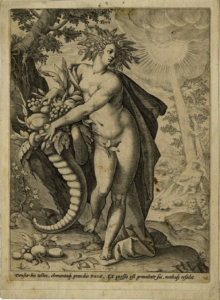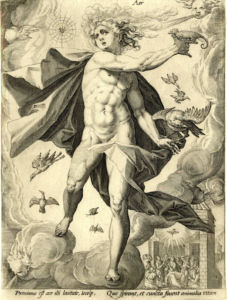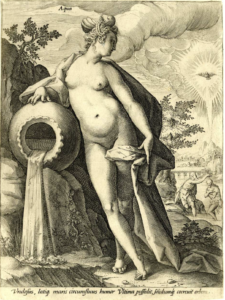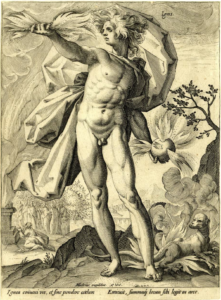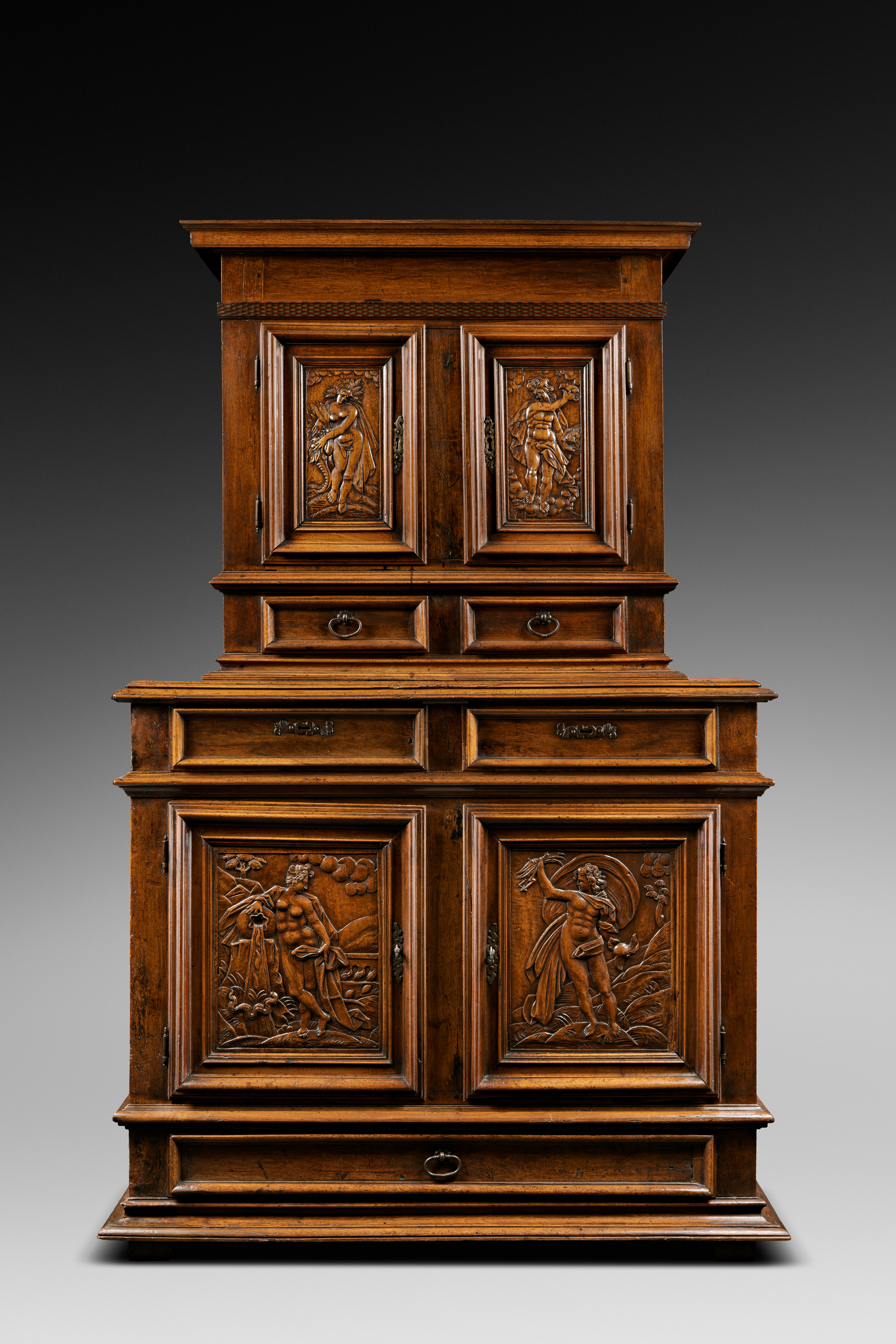Description
This well-proportioned piece consists of two slightly recessed bodies, four drawers in the middle section, and a large drawer at the base. The quarter-round moldings and the guilloche patern at the base of the frieze already announce the transitional period around 1600.
The structure, while still rigorous, remains very harmonious, and the iconographic interest is significant. Indeed, each of the doors is sculpted in bas-relief, executed by a very skilled chisel, depicting the Four Elements directly inspired by prints from the Dutch artist Hendrik Goltzius, dated 1586 and engraved by one of his students. Only the details of the backgrounds are modified.
In the upper part, Earth holding its horn of plenty faces Air resting on clouds, with birds on both sides.
In the lower part, the Water Source leaning on the urn, pouring its water, respects the attitude of Goltzius’ allegory. The small tree in the background on the left, overlooking a rock, is preserved here. Opposite, Fire presents, in a gesture identical to the engraving, symbolic lightning and flaming grenades.
The doors of this piece superimpose from left to right Earth and Water, Air and Fire. The powerful morphology of the characters and the mannerism of the attitudes remain perfectly faithful to the prints of the Dutch artist.
It should be noted, however, that the Christian symbolism depicted on Goltzius’ Elements – the Baptism of Christ for Water, the Descent of the Holy Spirit for Air, the Creation of Adam for Earth, and the sacrifice of Elijah for Fire – has not been reproduced by the sculptor, who focused on the foreground characters and some landscape details.
Literature :
Text by Jacqueline Boccador, “Le Mobilier Français du Moyen Age à la Renaissance,” Editions d’Art Monelle Hayot, 1988, p. 262-263.
The piece is reproduced on p. 262, ill. 198.
The British Museum, from Hendrik Goltzius, 1586
